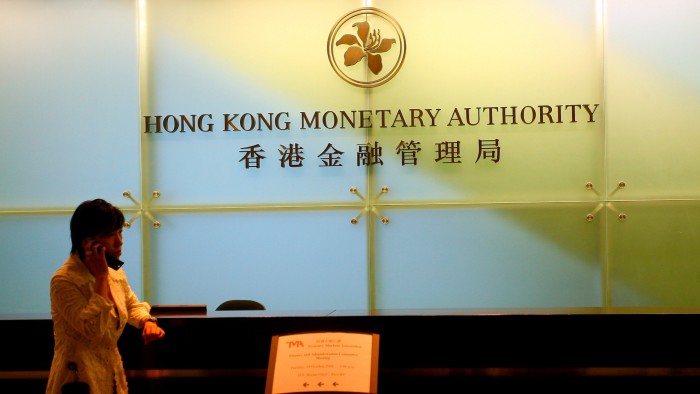Stay informed with free updates
Simply sign up to the Currencies myFT Digest — delivered directly to your inbox.
Asian FX is full of drama these days, but here’s something that has flown under the radar: the Hong Kong dollar has bounced up against its upper dollar limit, forcing the Hong Kong Monetary Authority to intervene aggressively to maintain its peg to the US dollar.
The Hong Kong dollar has been kept in a tight corridor of 7.75 to 7.85 per US dollar for over four decades, despite fitful attempts by hedge funds to break its grip — most forcefully in 1997-98.
Just a few years ago, famous macro tourist Bill Ackman was shorting the HKD, on the view that it was “only a matter of time before it breaks”. At the time, Hong Kong’s financial secretary said that “if you bet against the Hong Kong dollar, you are bound to lose”.
However, pressure is now on the HKD to appreciate versus the dollar. In fact, before the recent reversal in Asian currencies, the HKD actually seems to have traded slightly outside the corridor several times over the past week.

This is because of people racing to pare back their exposure to the dollar in general, and massive inflows into Hong Kong in particular. This isn’t a Taiwan lifer-style situation (though we suspect a lot of Hong Kong finance companies are repatriating money).
But unlike Taiwan’s central bank — which is understandably worried about being labelled a currency manipulator by the US Treasury if it intervenes — the Hong Kong Monetary Authority has no qualms about doing so.
Here’s what Oxford Economics said in a report today, with FT Alphaville’s emphasis below:
First, a currency board arrangement is stronger than a currency peg. That is, the HKMA has a legal commitment to issue HKD only if fully backed by USD reserve assets. This is unlike a currency peg which relies on interest rate policy to keep the exchange rate within a band.
Second, the HKMA has to prevent currency strength, rather than weakness, arguably an easier task, as it does not deplete FX reserves.
Since Friday, it has bought close to USD 134bn, allowing the increase in the monetary base to lead to a sudden fall in 1m HIBOR rates to 3.66%, the lowest in two weeks.
The $134bn is almost certainly a typo, as that would be a truly astonishing amount (the HKMA’s overall FX reserves are about $423bn) and the accompanying chart indicates that Oxford Economics is actually talking about Hong Kong dollars.
Update: Oxford Economics’ Javier Corominas has been in touch to confirm that it was indeed a typo, and to update the estimated intervention number to HKD129bn. Even so, this would still equate to almost $17bn in just a few days.

Moreover, non-deliverable forwards — derivatives that settle in cash at a price set by the difference between the contract’s level and the spot price of the underlying currency, on the day of its maturity — indicate that some investors are pricing in a possibility that the HKMA might yield.
Twelve-month NDFs on the Hong Kong-US dollar exchange rate are now trading at their lowest level since the mid-2000s.

So what does this mean? Well, God famously invented FX strategists to make economists seem accurate, so Alphaville is loath to be definitive in this field. But the peg’s not going to snap. Come on.
Fixed currency regimes — whether hard pegs or corridors — are a lot easier to protect when all the pressures are on currency appreciation. All a central bank has to do is print enough of it and buy overseas assets with the fresh money.
The Swiss National Bank famously accumulated close to $1tn of overseas assets in its defence of the franc’s ceiling, and that was a temporary measure that only lasted between 2011 and 2015. The Hong Kong dollar’s peg has been around for over four decades and is akin to religion.
But it sure will be fun to watch.
https://www.ft.com/content/3cb1c729-a5a5-4db0-81f9-e2a8560746d1


